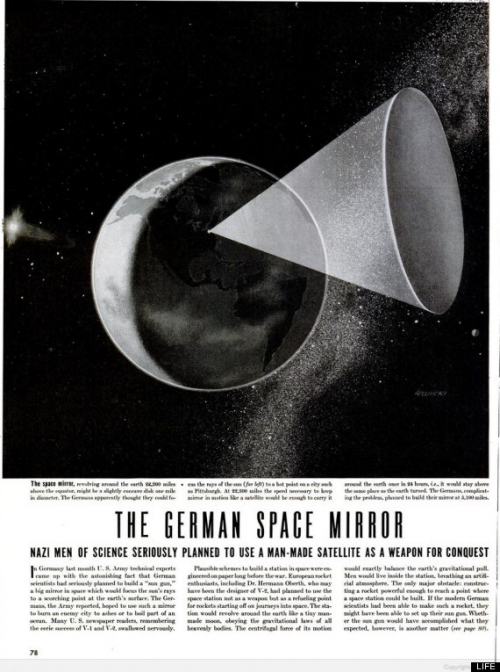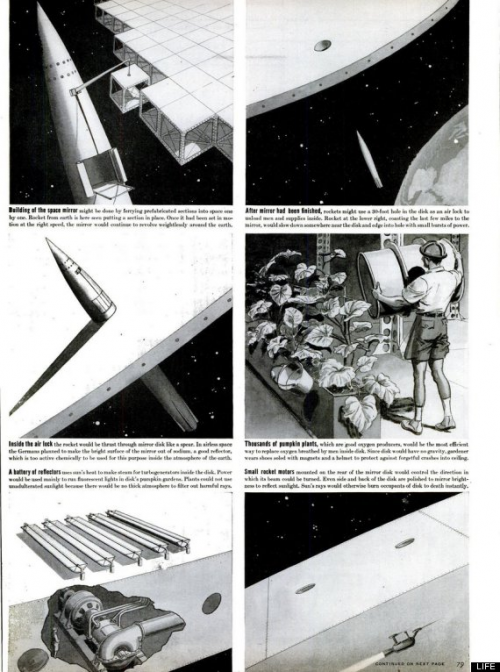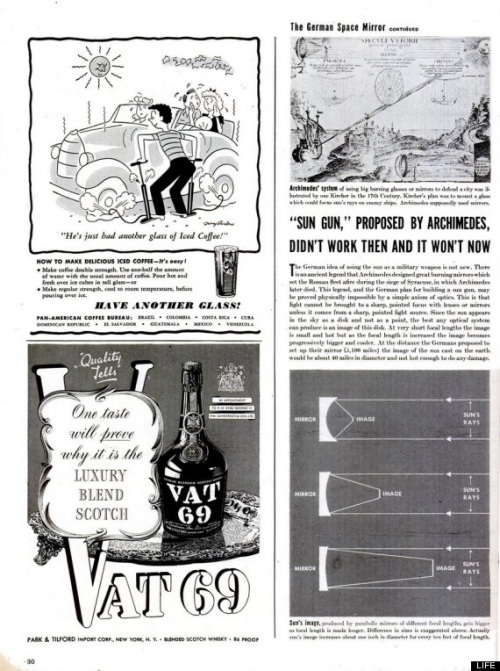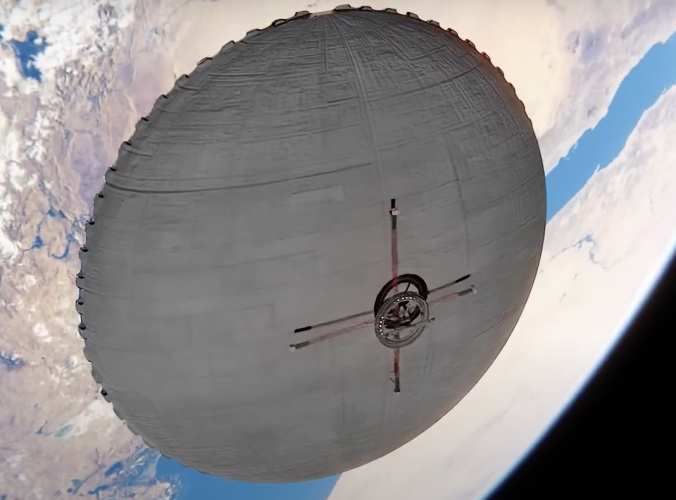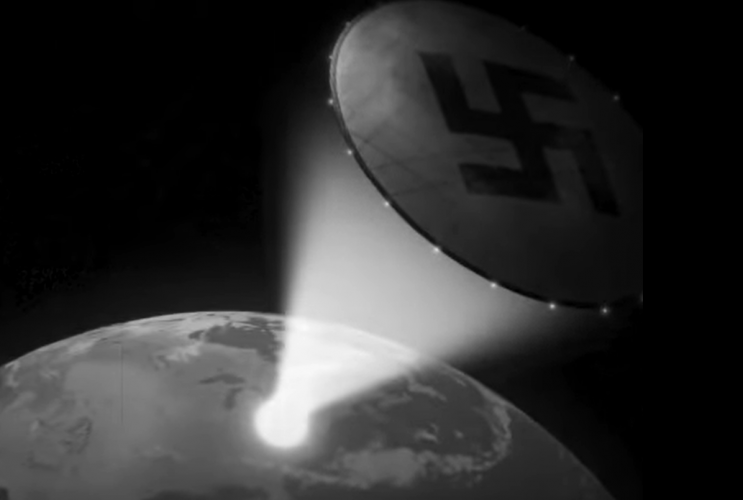In 1929 physicist Hermann Oberth coined the idea for a behemoth space mirror that would reflect sunlight onto Earth during night time, thus creating an everlasting day, and significantly boosting crop yields.
Sometime in late World War II, the concept was discovered by the Nazis, who sought to create a superweapon on its basis. It was studied by a group of scientists in the Hillersleben village, who estimated that a sodium reflector with an area of 9 square kilometers situated 8,200km above Earth would have the potential to scorch enemy cities. Approximately a million tones of sodium would have been needed for the reflector alone, whereas the weight of the remaining structure is unknown. The name "Sonnengewehr" essentially meant "Sun Gun" or "Sun Cannon".
The crew compartment would have had artificial gravity achieved through rotation, and was to be completely or nearly self sustainable in terms of oxygen and food. The Germans estimated it would take roughly 50 - 100 years to build.
Sometime in late World War II, the concept was discovered by the Nazis, who sought to create a superweapon on its basis. It was studied by a group of scientists in the Hillersleben village, who estimated that a sodium reflector with an area of 9 square kilometers situated 8,200km above Earth would have the potential to scorch enemy cities. Approximately a million tones of sodium would have been needed for the reflector alone, whereas the weight of the remaining structure is unknown. The name "Sonnengewehr" essentially meant "Sun Gun" or "Sun Cannon".
The crew compartment would have had artificial gravity achieved through rotation, and was to be completely or nearly self sustainable in terms of oxygen and food. The Germans estimated it would take roughly 50 - 100 years to build.

